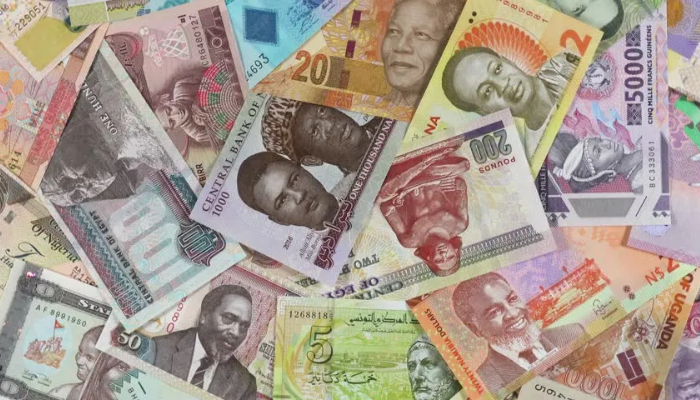Stronger local currencies across sub-Saharan Africa are cooling inflation and easing business cost pressures, paving the way for central banks to begin cutting interest rates after years of policy tightening, new data from S&P Global Market Intelligence show.
Currency appreciation has helped slow business costs to their weakest pace since the pandemic, with five of the seven African economies tracked by S&P Global’s Purchasing Managers’ Index (PMI) surveys — including Nigeria, Ghana, Zambia, Kenya, and South Africa — recording gains against the US dollar in 2025.
“The Ghanaian cedi and Zambian kwacha have each appreciated by 15 percent against the US dollar in 2025 so far, while the South African rand and Nigerian naira have also seen gains,” said Andrew Harker, Director of Economic Indicators and Surveys at S&P Global Market Intelligence.
Read also: Top 10 best performing African currencies in June 2025
S&P Global data show that overall input costs across the region rose in September at the slowest pace since 2020, while selling prices increased at one of the weakest rates in five years. Ghana and Zambia, the two strongest currency performers, recorded outright declines in purchase prices during parts of the year, a rare shift for economies long exposed to imported inflation.
Even in Nigeria, where consumer inflation remains above 25 percent, firms reported the softest pace of input-cost growth since March 2020. The data suggest that after months of volatility, exchange-rate stabilization is beginning to filter through to supply chains, particularly in manufacturing and consumer goods.
S&P Global noted that between June and August, business survey respondents across the region were more likely to cite exchange-rate movements as a reason for falling rather than rising prices; the first time this pattern has appeared since the PMI series for all seven economies began.
Cooling inflation has already allowed several central banks to begin loosening policy. Ghana has led the shift, cutting its benchmark rate by a cumulative 650 basis points over its last two meetings. Nigeria followed in September with a 50-basis-point reduction to 27 percent, its first cut in five years. Kenya, Mozambique, and South Africa have also lowered rates this year, while Uganda has held steady. Zambia, the only country to raise borrowing costs, is expected by S&P Global to reverse course in November with a potential 50- to 100-basis-point cut as inflation slows.
The easing cost environment has strengthened private-sector activity. Regional output expanded in September at the fastest pace since May, supported by new orders, steady hiring, and higher inventory levels. Zambia saw its sharpest increase in business activity in nearly two years, while Kenya’s private sector returned to growth following mid-year disruptions linked to street protests.
Read also: 20 African countries with stronger currencies than the Naira
“The sub-Saharan Africa private sector enters the final quarter of the year on a solid footing, in part due to the currency gains seen over the course of 2025 so far,” Harker said.
The regional trend aligns with a broader global slowdown in price pressures. J.P. Morgan’s Global Composite PMI, compiled by S&P Global, rose to a seven-month high of 52.4 in July — the fastest pace of expansion this year — as inflation outside the United States continued to moderate. The report found that steadier non-US currencies and softer import prices helped temper cost growth worldwide, even as US tariffs drove faster price increases domestically.
After years of macroeconomic turbulence, Africa’s improving currency and inflation dynamics point to a policy reset. The next phase, economists say, will depend less on exchange rates and more on execution: how governments manage budgets, investment flows, and the momentum of domestic demand in a still-fragile global recovery.

